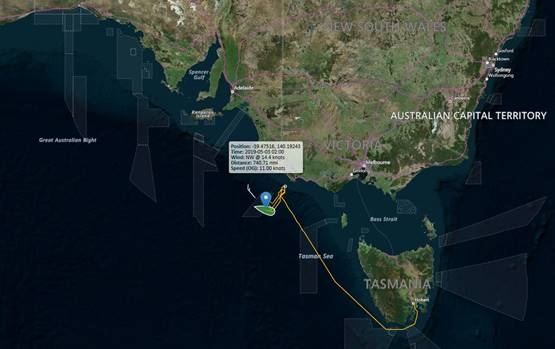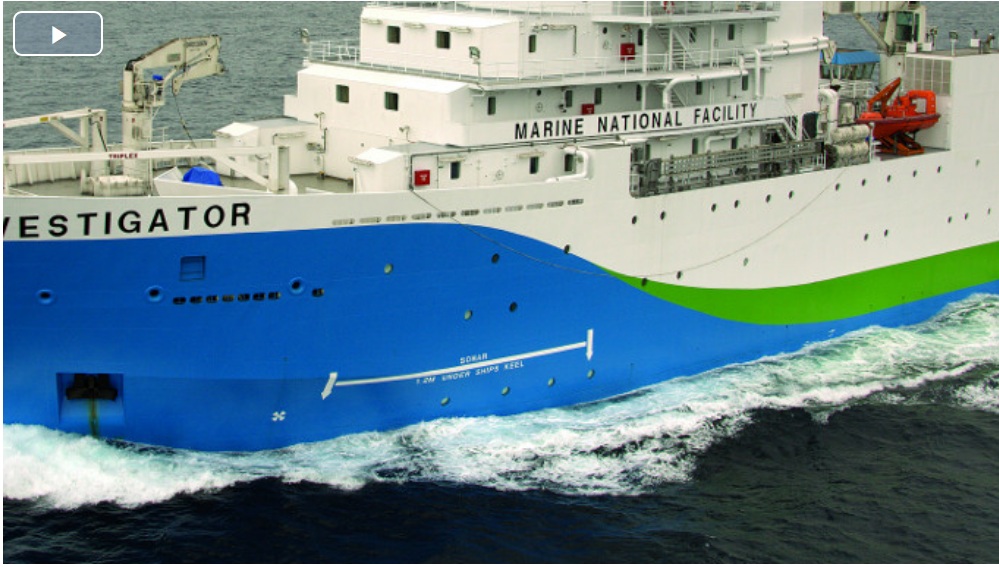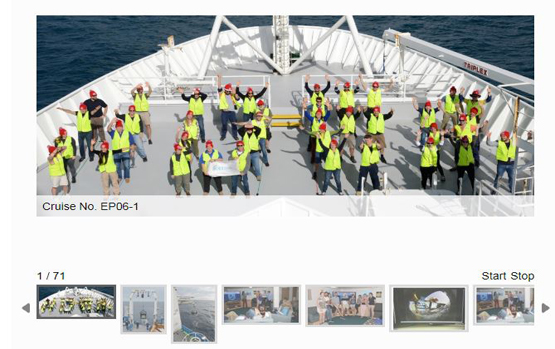The RV Investigator is currently undertaking oceanographic research along the 110°E meridian off Western Australia as part of the second International Indian Ocean Expedition. The voyage is led by Professor Lynnath Beckley of Murdoch University and the research is supported by a grant of sea time on RV Investigator from the CSIRO Marine National Facility.
|
Date: May 20, 2019 |
Time: 1200 AWST |
|
Latitude: 35°S |
Longitude: 110°E |
|
Wind direction: WSW |
Wind speed: 23 knots |
|
Swell direction: W |
Depth: 4911 m |
|
Air temperature: 14.8°C |
Sea temperature: 18.3°C |
|
Notes: The rain has cleared and there are patches of blue sky all around! Rock lobster larvae (phyllosoma) were caught in the surface nets last night and pygmy blue whales were heard calling in the east. |
|
Planktonic consumers can be divided into two major size classes, the micro- and mesozooplankton, depending on whether they pass through or are retained on 200-ϻm mesh sieve. The mesozooplankton consists mainly of true multicellular animals, like copepods, euphausiids (krill) and chaetognaths (arrow worms), that are concentrated and collected by towing a plankton net with 200-ϻm mesh through the water. In contrast, the microzooplankton (<200 ϻm)> category contains mainly protozoans (single-cell flagellates and ciliates) with some very small animals and is best collected by preserving water samples without prior net concentration.
Both micro- and mesozooplankton are diverse assemblages of organisms with varying life strategies and feeding preferences, but they are associated with different functions in ocean food webs. Microzooplankton are typically the main consumers of phytoplankton and bacteria, especially in regions where the dominant phytoplankton
Mesozooplankton, on the other hand, are the main food web link to higher level animals (fishes), and they are associated with mechanisms (daily migrations, rapidly sinking fecal pellets) that move organically fixed carbon and nutrients out of the euphotic zone and into deeper layers of the ocean. Studying how ocean systems differ in terms of how productivity moves through micro- versus mesozooplankton is therefore a basic approach to characterizing their different relative functions in nutrient recycling, trophic transfers and carbon export.
Be sure to follow the daily posts of our One Ten East Logs from the IN2019_V03 aboard RV Investigator at https://iioe-2.incois.gov.in and https://wamsi.org.au








